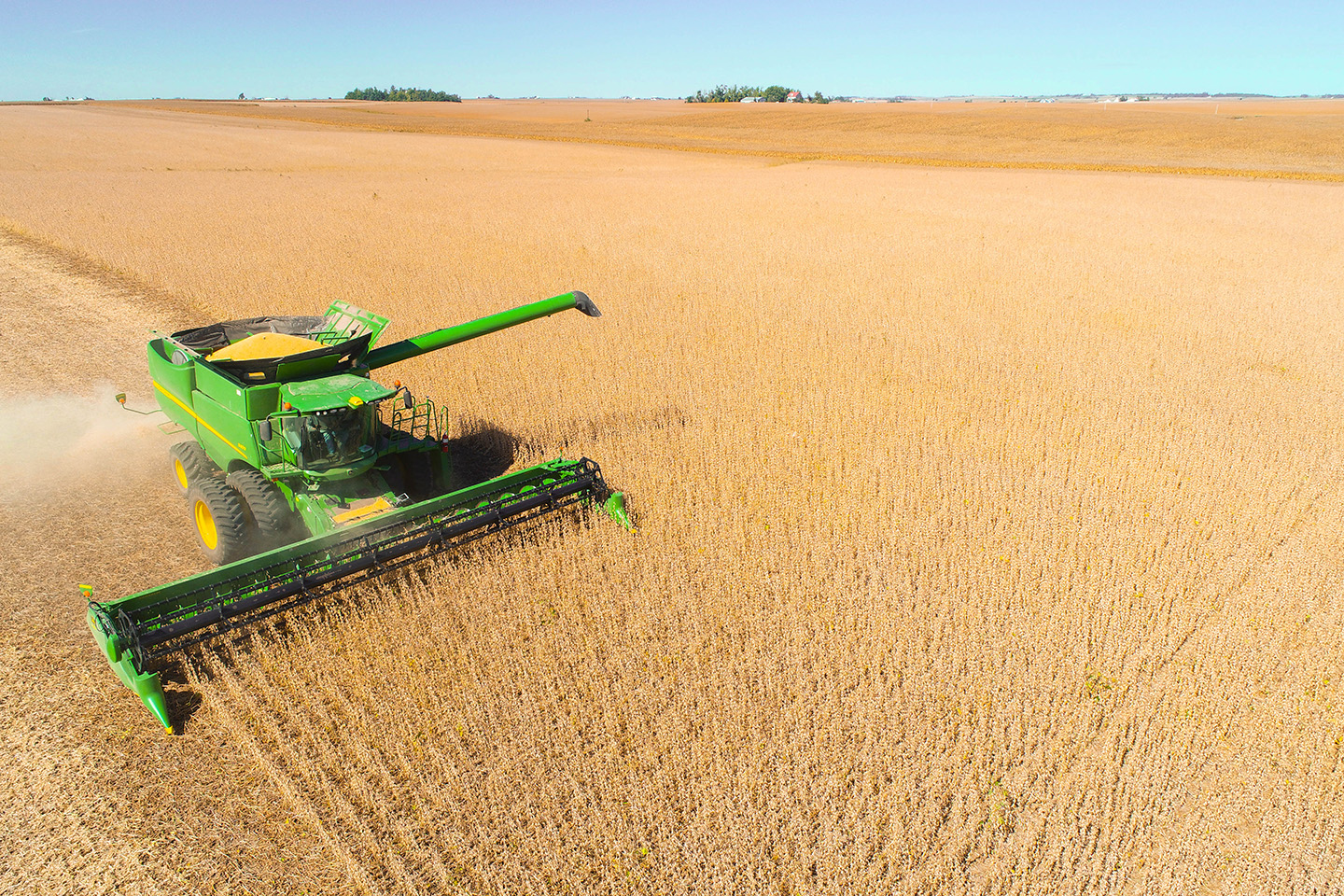
Four regional soybean checkoff organizations have been awarded $900,000 contract research agreement with the United Soybean Board to fund basic or applied research projects, with the rule they must be regionally and nationally important for the short- and long-term success of U.S. soybean farmers. (Photo: Joclyn Bushman/Iowa Soybean Association).
Funding to provide multi-regional research efforts announced
November 3, 2022 | Kriss Nelson
Four regional soybean checkoff organizations are joining forces to bring research significant for U.S. soybean farmers.
“We want researchers from around the country with different expertise to come together for research that will benefit soybean farmers on a national level,” says Ed Anderson, senior director of research at the Iowa Soybean Association and Executive Director of the North Central Soybean Research Program (NCSRP).
The Atlantic, Mid-South, North Central , and Southern regions have obtained a $900,000 contract research agreement with the United Soybean Board (USB) to fund basic or applied research projects, with the rule they must be regionally and nationally important for the short- and long-term success of U.S. soybean farmers.
“This is a collaboration among the four most active regional soybean checkoff organizations to partner with USB and with multi-disciplinary researchers to build research programming for our farmers and the soybean industry,” says Anderson. “I embrace and promote collaboration. It brings good people together to do good work to solve our biggest challenges and opportunities most expeditiously.”
Suzanne Shirbroun, president-elect of the ISA board of directors, vice president of the NCSRP, and farmer near Farmersburg in Clayton County, will participate in the selection process of high priority and broad-scoped research that will utilize this large national soybean checkoff investment to advance the short- and long-term agronomic, technological, and sustainability needs and opportunities pertinent to the future of U.S. agriculture.
“There are fewer research dollars available across the agriculture industry,” she says. “Whether we work within the NCSRP or alongside other regionals and the USB, we must all work together for the soybean farmer.”
Twenty-two proposals have been received and will be distributed to each region’s soybean board farmer directors for review and discussion.
Examples of proposals received include:
- Reducing late-season yield loss and protecting seed quality by provision of data-driven best management practices to ensure climate-resilient soybean production.
- Image database collection protocols for implementing artificial intelligence in soybean production.
- Field phenotyping using machine learning tools integrated with genetic mapping to address heat and drought-induced flower abortion in soybeans.
- Development and expansion of disease management decision tools across multiple soybean regions.
- Developing adaptive weed and water management decision support tools for planting green in no-till soybean production systems.
Regional staff, working with farmers and the USB staff, will then develop funding contracts with researchers, upload project information into the national soybean checkoff research database, monitor and track the research, and ensure that results are communicated in various ways and formats including the Soybean Research and Information Network (SRIN) website.
“We hope this will be a sustained investment with USB and partnership with the states and regions to drive new and otherwise untapped opportunities to benefit our soybean farmers across the Midwest,” says Anderson.
Back